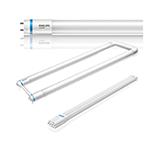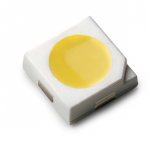How Long Does an LED Fixture Really Last
(This is the second post in a series on LED life ratings. Click here for Part 1)
The LED lighting industry seems to set new standards for longevity and efficiency on a yearly basis. The technology has advanced (and is continuing to advance) so quickly that the methods for measuring and evaluating LED performance are struggling to keep up. Currently lumen maintenance is the industry standard for evaluating and comparing LED fixtures, but it isn’t perfect – and consumers and specifiers alike need to know the limitations so they can make informed choices.
The problems with L70 and lumen maintenance
First, lumen maintenance is based on testing done on the LED boards by themselves, not as part of a whole fixture. There are other important ways in which the light in an LED can deteriorate beyond simple loss of light output in the LED board – for instance, dirt accumulation on the lens, reflector, or LED boards will reduce light output, and color-shift can also occur to the point that light is no longer acceptable. This potential loss of light intensity and/or quality is not represented by the lumen maintenance number.
On top of that, gradual degradation is not the only way an LED fixture ceases to be useful. As complex electrical products, LED fixtures typically have over a dozen different components that could fail or falter, resulting in either immediate failure of the entire fixture or reduced performance. The driver is typically considered the weak link in this chain, with most having an expected lifetime of approximately 50,000 hours. A fixture may be expected to lose less than 30% of its initial light output after 100,000 hours, but at least one replacement driver will almost certainly be needed before the end of that time.
Finally, heat management is extremely important to the longevity of LED fixtures. Not only do the LED boards need to be kept cool to preserve their light output and life expectancy, but the driver is also typically sensitive to higher temperatures. This is not ignored by the testing process, as the LM-80 process used for testing LED boards (or “packages”) involves controlling and measuring the temperature of the LED case. However, the LED board and other fixture components are tested separately rather than together and then those results are united in predictive calculations.1 The test temperature also may not reflect the ambient temperature for common applications – for instance, 25°C (77°F) is the most common temperature connected to lumen maintenance, which is often an unrealistic expectation for outdoor applications.
Making informed choices
Undoubtedly leaders in the LED industry will continue to discuss better ways to standardize reporting and evaluation of LED fixtures. In the mean time, make sure you understand the things lumen maintenance fails to account for. Contact your Voss rep today for more help understanding the world of LED and picking the right product to meet your lighting and energy needs.
- Next Generation Lighting Industry Alliance | “LED LUMINAIRE LIFETIME: Recommendations for Testing and Reporting” Second Edition – June 2011
(Want to learn more? Click here for Part 3 in the series)




